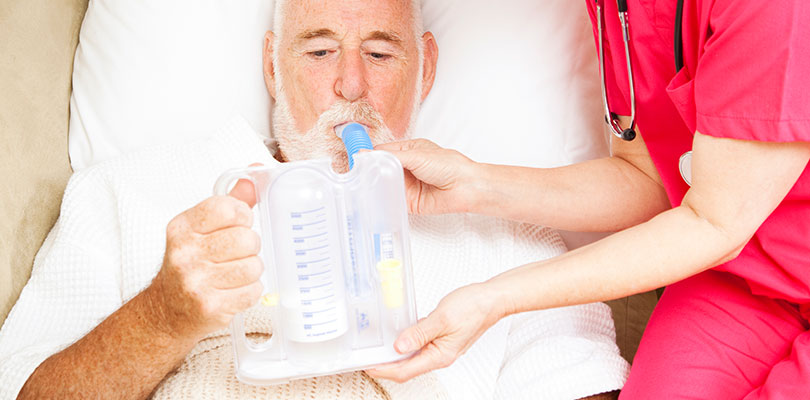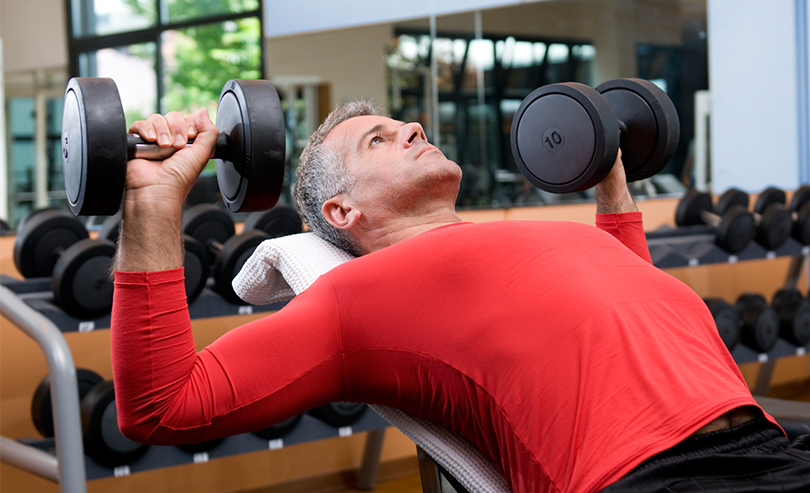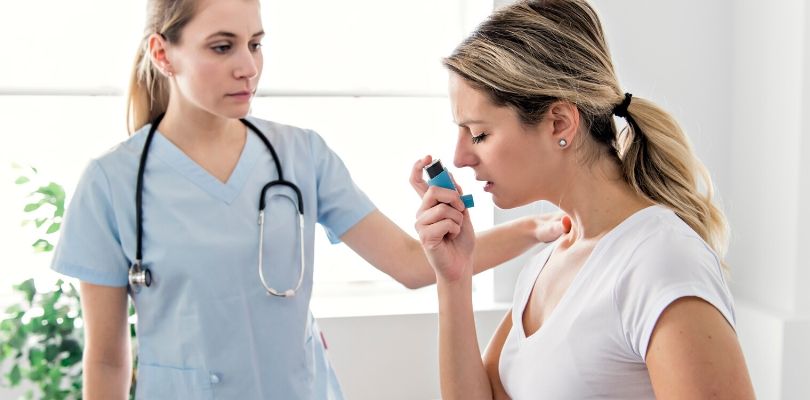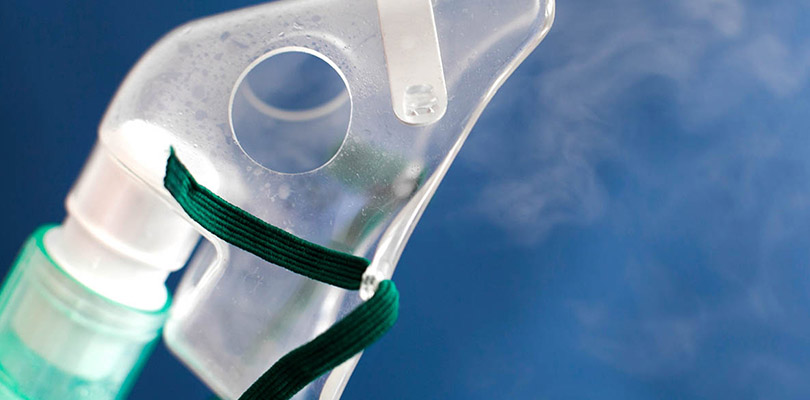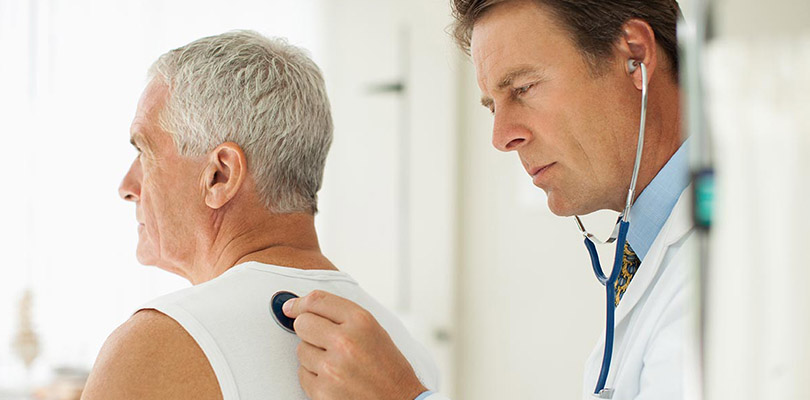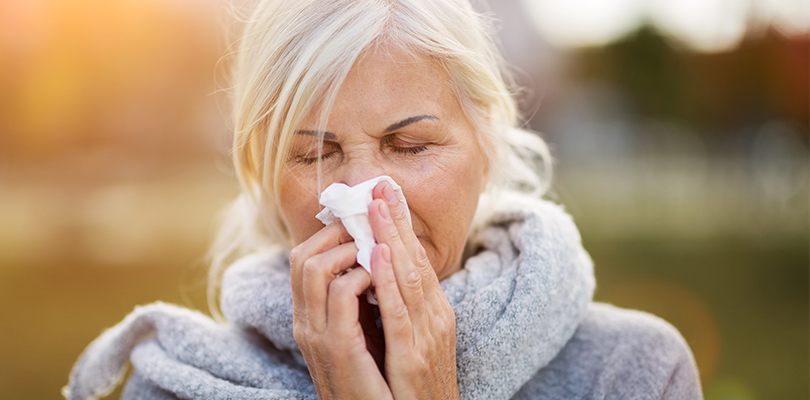Photo Credit: lisafx / iStockPhoto.com
How Managing Your Breath Can Help With COPD Symptoms
Chronic obstructive pulmonary disease (COPD) leads to progressively worsening airway obstruction. In the early stages, people may experience only shortness of breath upon exertion, but this later progresses to feeling out of breath while performing normal daily activities.
Two other major symptoms are a build-up of mucus in the airways and coughing. For most people with COPD, breathlessness causes the most anxiety. It also causes sleeping issues, fatigue, activity restriction, and reduced quality of life.
COPD and Breathlessness
In COPD patients, fatigue and breathlessness upon exertion are difficult, frightening, and can make exercise difficult. However, the more inactive you are the weaker your limb and respiratory muscles will become.
This can lead to a downward spiral of weakness, more trouble breathing and further inactivity, progressing to breathlessness and an inability to function during normal daily activities. Although it can be difficult to overcome the breathlessness and fatigue, regular moderate physical exercise is the best method for maintaining normal function in spite of progressive lung deterioration.
Rehabilitation for Breathing
The basis of all pulmonary rehabilitation programs is a structured exercise program involving aerobic exercise and strength training. The purpose is to improve the strength and endurance of the limb and respiratory muscles to keep you functioning normally for longer.
Breathing exercises for COPD can help you cope with episodes of breathlessness. One breathing exercise, pursed lip breathing, is actually adopted spontaneously by many COPD people in breathing distress.
Breathing exercises can relieve distress, reduce the exercise-induced anxiety, and allow you to continue to benefit from physical exercise. Practicing the breathing exercises outside of breathing distress is also useful for when you need them.
Breathing exercises are also important for those who are unable to undertake physical exercise.
Understanding Your Lungs
In the normal lungs, the air sacs expand as oxygen rich air is breathed into the lungs. Oxygen crosses the walls of the sacs to enter the blood in exchange for carbon dioxide. Upon breathing out, the air sacs bounce back to their original shape and the carbon dioxide rich air is breathed off.
In COPD, the walls of the air sacs lose their elasticity and structure and do not bounce back readily to their normal shape. The airways also become inflamed, becoming thicker and producing mucus, which causes them to block.
The consequence is that it is harder to breathe in. Also, the air that gets into the air sacs gets trapped, leading to incomplete emptying on exhalation and over-inflation of the lungs. The changes in the lungs leads to rapid, shallower breathing and changes in the muscles involved in breathing.
Muscles Working in Overdrive
Poor oxygen-carbon dioxide exchange stimulates more rapid breathing, especially with exertion, which makes the respiratory muscles work harder. The respiratory muscles also have to work harder to get air through the obstructed airways and into the overinflated air sacs.
The main muscles involved in breathing at rest are the diaphragm and, to a lesser extent, the muscles between each rib. Other accessory muscles, the muscles of the neck and chest, only normally become involved with exertion.
In COPD, the rib muscles and the accessory muscles make a greater contribution, even at rest. The inspiratory muscles fatigue as they work hard against an increasing load. The diaphragm cannot fully relax against the overinflated lung and becomes tight and fatigued.
As the muscles fatigue, breathing becomes inefficient and the muscles work out of sync, with the abdominal muscles pushing counteractively against the chest during inspiration. Breathing progressively becomes more and more difficult.
There are several ways to make it through the holidays with COPD comfortably; balancing work and rest and protecting against the season’s airway irritants.
COPD patients also have generalized muscle dysfunction and wasting that affects not only the muscles of respiration, but also of the leg and arm muscles. This is a major cause of exercise intolerance in COPD patients, separate from breathing problems, and is the main reason why regular physical exercise is important.
The factors that cause muscle dysfunction are not fully known. These changes cause reduced muscle strength and endurance, which results in rapid muscle fatigue. While reduced function of the leg and arm muscles affects exercise tolerance, reduced inspiratory muscle strength and endurance is more seriously associated with reduced survival.
Breathing Exercises You Can Try at Home
As well as helping you to cope with breathlessness and assisting you to continue physical exercise, breathing exercises aim to reverse the abnormal breathing pattern of COPD and reduce the strain on the respiratory muscles. They aim to make breathing more efficient, to retrain the diaphragm, strengthen the breathing muscles, and take work away from the rib and accessory muscles.
Breathing training also aims to help exhale air from the over-inflated lungs. Studies have shown breathing exercises improve function, with most people able to walk a greater distance over a set time after eight weeks of regular breathing exercises, for five to 15 minutes three times per day.
There are a number of types of breathing exercises: those that can be done at home and those that require specialized equipment in the clinic. Safe breathing exercises you can undertake at home are:
Pursed Lip Breathing
This exercise increases exhalation time, reduces respiratory rate, and causes you to breathe more deeply.
- Breathe in slowly through your nose for three counts, keeping your mouth closed
- Purse your lips like you are going to whistle
- Breathe out gently through your lips for six counts
- If this is too long, then aim to breathe out twice as long as you breathe in
- Repeat steps one through three for up to 15 minutes, as long as you feel comfortable
When using pursed lip breathing to specifically manage shortness of breath:
- Stay calm and try to relax
- Lower your head and shoulders
- Breathe in and out through pursed lips as fast as necessary
- Gradually slow down your exhalation by taking longer to breathe out
- Start to breathe in through your nose and out through your mouth
- Stay in this positon until you have completely caught your breath
Diaphragmatic or Abdominal Breathing
Focus on using your diaphragm and abdominal muscles when breathing, reducing your chest wall motion. This helps strengthen your diaphragm and abdominal muscles, allowing more air to move in and out of your lungs without tiring the accessory muscles.
- Lie on your back with your knees bent
- Place one hand on your abdomen below your rib cage
- Place the other hand on your chest so you can feel your diaphragm as you breathe
- Inhale deeply through your nose for three counts — the belly and lower ribs should rise but the chest should remain still
- Tighten your stomach muscles and exhale for a count of six through slightly puckered lips — your hand on your chest should remain still
- Repeat for five to 10 minutes
Another helpful method is yoga breathing, which is timed and concentrated with a focus on deep breathing, exhalation, body position, and relaxation.
There are other more intensive breathing exercises that incorporate applying resistance while breathing. Examples include breathing through a variable diameter pipe and placing weights on your chest and abdomen while breathing. These are techniques that require specific instruction or equipment. In contrast, pursed-lip breathing and diaphragmatic breathing have shown functional benefit, are safe, and can be done at home.
